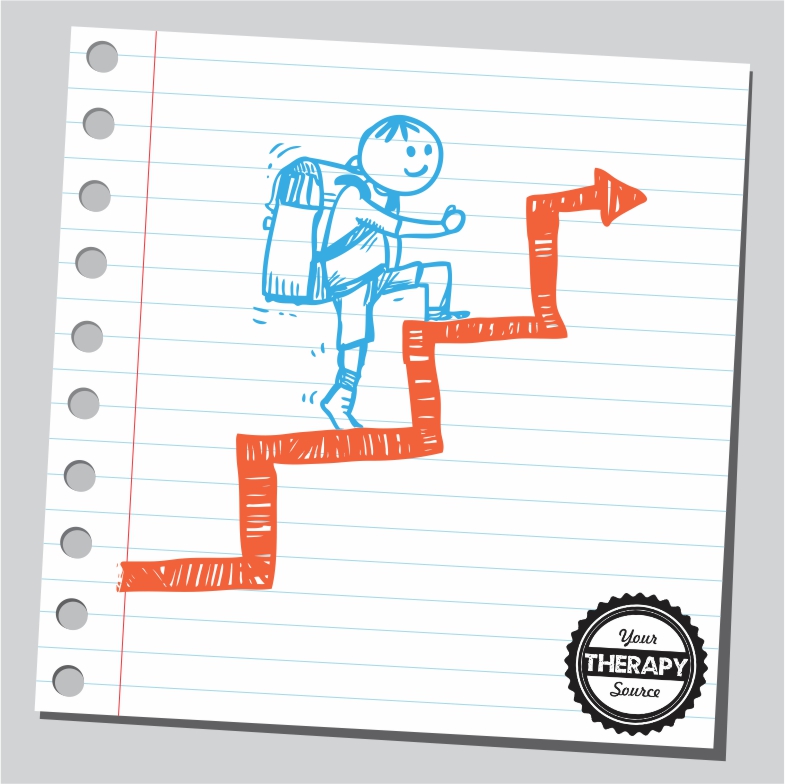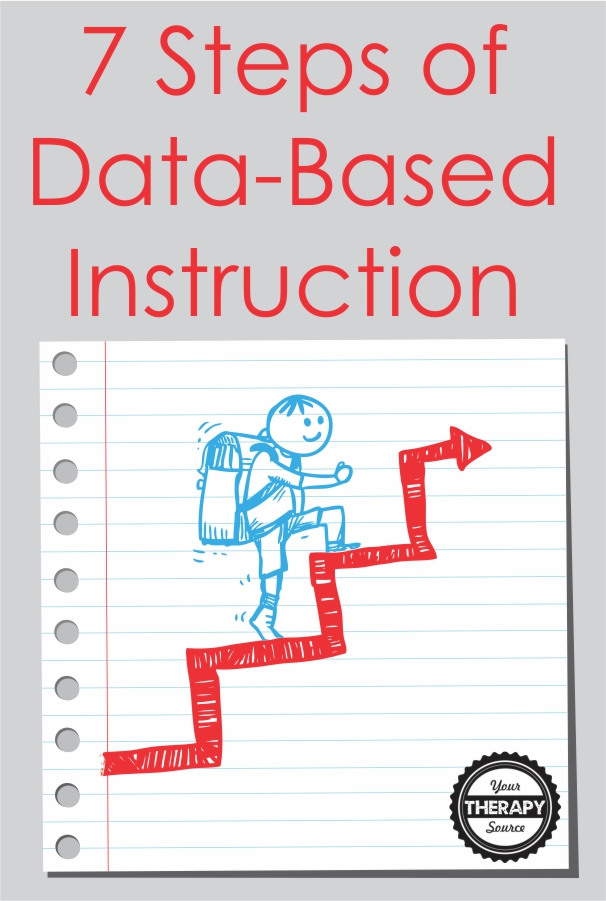7 Steps of Data Based Instruction
Are you familiar with data based instruction? The goal of data based instruction (or data driven instruction) is to improve student outcomes through individualized instruction based on collecting data by monitoring student progress. There are 7 general steps of data based instruction.

Identify the Student’s Present Level of Performance
In step of data based instruction, collect baseline data on the student’s present level of performance. For example, if the student need to improve their outcomes on handwriting speed, you may collect baseline data on how many words per minute the student is able to write.
Set a Long Term Performance Goal
Work collaboratively with the student and teacher to set a long term goal to improve student outcomes. Make sure the goal is a SMART goal – specific, measurable, attainable, relevant and time bound. Read more on writing SMART goals here.

How to Write IEP Goals Workbook
The How to Write IEP Goals Workbook digital download provides a step by step guide to help you create high-quality, measurable goals and objectives for students.
Details about the digital workbook:
20 page PDF document delivered immediately following payment
Do you struggle to write measurable IEP goals? Are you finding it difficult to determine if a student …
Use Evidence-Based Interventions and Monitor Progress to Implement Data Based Instruction
Investigate and determine an evidence-based intervention to help the student meet the long term goal. Establish how you will monitor progress and how often you will collect the data. Find out more about Fine Motor Progress Monitoring and Gross Motor Progress Monitoring.
Determine When to Modify the Interventions
Establish decision rules (ie cut off points) to the data to determine when instructional modifications are needed. In other words, decide at what point you will change the evidence-based intervention if you do not see progress.
Hypothesize Based on the Data
Using the data results, hypothesize about the student’s needs and potential future progress and make instructional changes as needed.
Monitor Progress on New Interventions
If you change the intervention, monitor student progress in response to the changes.
Repeat the Process throughout Data Based Instruction
Continue to repeat this process of using evidence-based interventions and progress monitoring until the student reach the goals that were set.
Read more on Data Driven Decision Making.
Access a FREE webinar on data collection in schools
Throughout the webinar, we provide examples of forms and templates that you can use to streamline your data collection. You can always create your own forms that are similar or start with ours that are ready to go (and you can edit).
Busy therapists and teachers can benefit from the easy to use forms and templates that are mentioned in the webinar to get meaningful results, make data-driven decisions, and help students succeed! The three products mentioned are:
- Data Collection for Special Education – Templates and Forms
- Data Tracking Forms for School-Based OT and PT
- Google Forms for Special Education
Sign up to receive the weekly email newsletter and other announcements from Your Therapy Source. You will be redirected to the webinar after you sign up. If you do not see the sign-up box below, email us at info@yourtherapysource.com referencing the free data collection webinar and we will send you the link.
Reference: Jung, P.-G., McMaster, K. L., Kunkel, A. K., Shin, J., & Stecker, P. M. (2018). Effects of data-based individualization for students with intensive learning needs: A meta-analysis. Learning Disabilities Research & Practice, 33(3), 144–155. https://doi.org/10.1111/ldrp.12172
Data Tracking Forms for School Based Occupational and Physical Therapy
Data Tracking Forms for School Based Occupational and Physical Therapy includes 11 data collection forms for monitoring progress in occupational and physical therapy in the school setting.
Document up to 4 IEP goals per student in your daily sessions in Excel AND GOOGLE SHEETS. It will graph your data directly from your session notes.
These Data Tracking Forms for…

